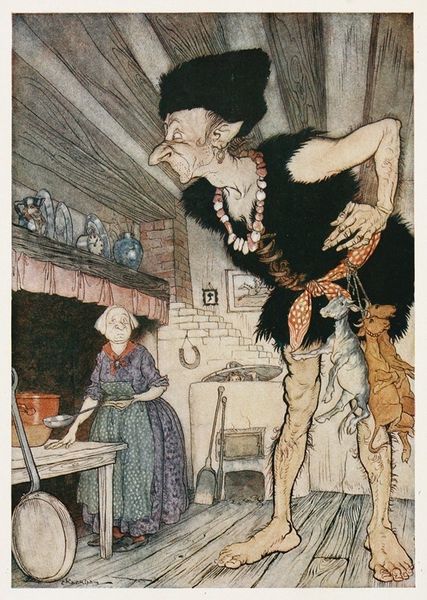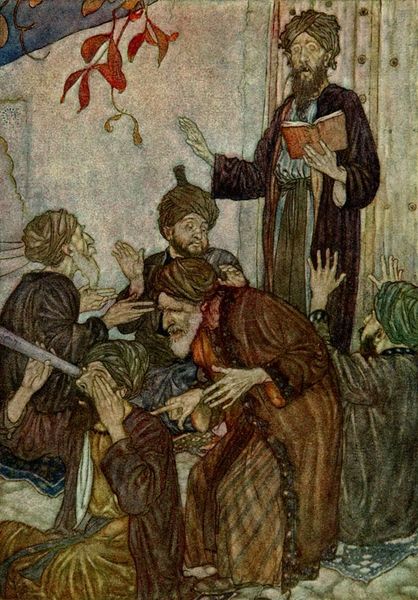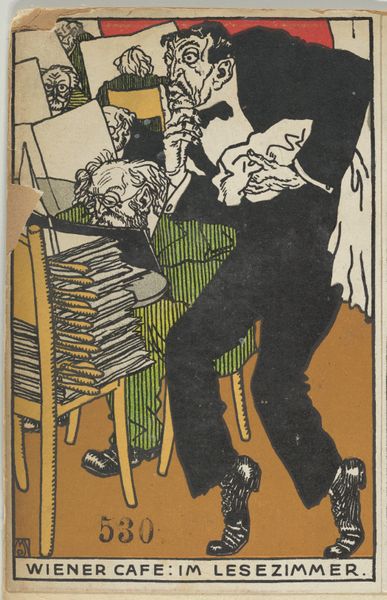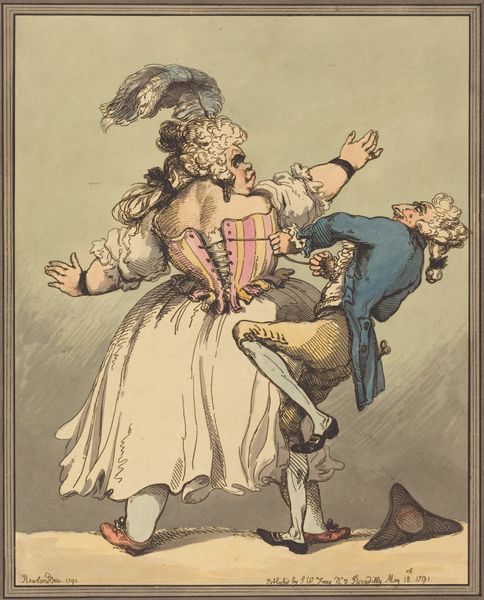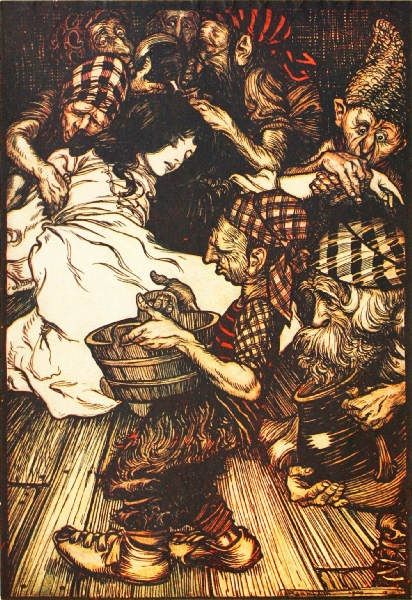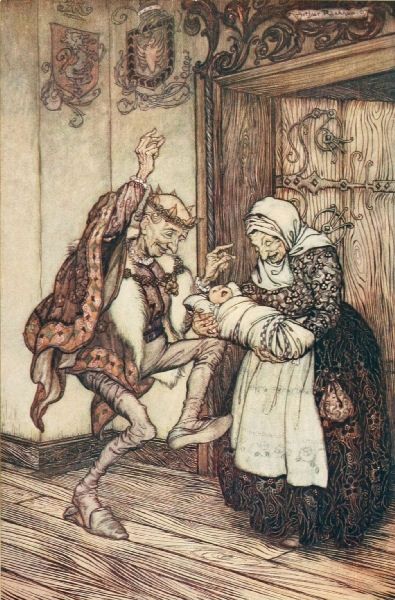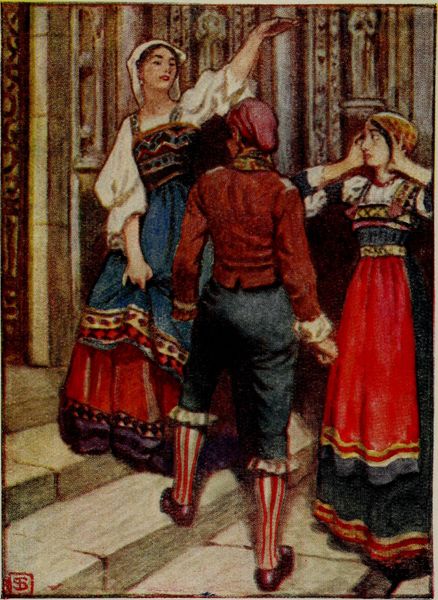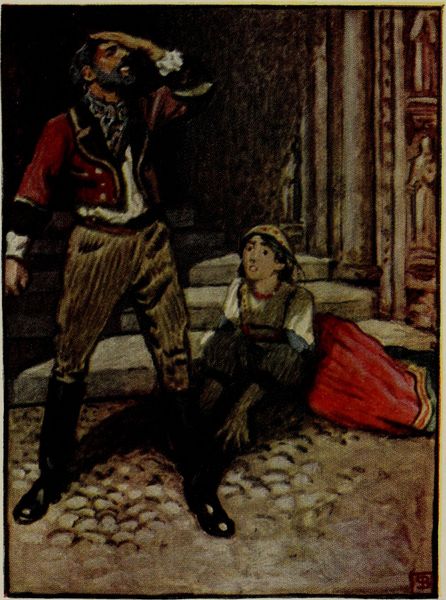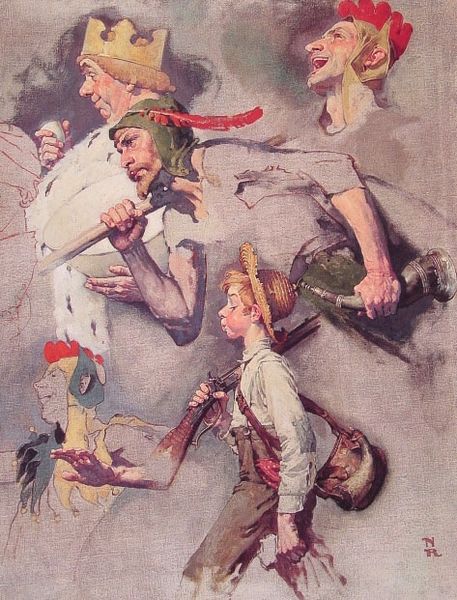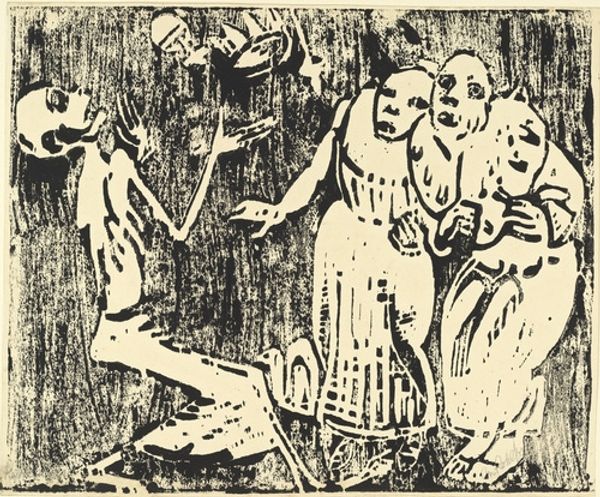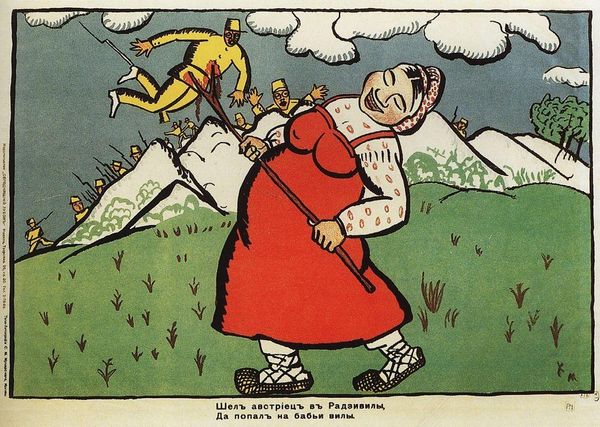
#
narrative-art
#
caricature
#
caricature
#
folk-art
#
genre-painting
Copyright: Public domain
Curator: Ugh, that’s brutal and a bit unsettling, like a Punch and Judy show gone sideways. Editor: Indeed. What you are looking at is called “Dumme menn og troll til kjerringer," which roughly translates to "Stupid Men and Trolls for Wives" created by Theodor Severin Kittelsen. This image presents a comedic yet pointed social commentary. Curator: Commentary, you say? It looks more like a nightmare! The exaggerated features, those menacing women clinging on, the desperate grasp of the men—it's as if they're pawns in a grotesque game. What is he trying to get at? Editor: Well, without a precise date on its creation, the context is difficult, but we can certainly delve into Kittelsen's critique of gender roles and power dynamics prevalent at the time. The men locked in a battle of pinkies as if that's all it boils down to, right? They're symbols, clearly, of the ways men are so easily led astray or into disadvantageous partnerships by, as the title bluntly puts it, "trolls." These aren't flattering portraits. Curator: Exactly! And those "wives"—they’re not merely figures of fun. They’re imposing, almost predatory. Notice the contrasts, those bulbous noses. There's a hint of sympathy mixed in—maybe for all involved—trapped in a cycle of folly. Or maybe it’s irony and sarcasm, and the men deserve it. Editor: Kittelsen often used folklore and caricature to explore universal themes of human nature, and here, I would argue he uses a somewhat harsh, satirical lens. Folk art often reflects societal anxieties; the way women were often accused of Witchcraft suggests there were similar fears in society at large. Curator: Do you think that the ambiguity of Kittelsen’s intentions adds to its enduring appeal? The piece has aged very well. Is it meant to serve a specific didactic goal, or just make people reflect on social norms of male-female relations? Editor: The absence of clear moralizing certainly allows viewers to interpret the work through the lens of their own experience and societal context. It fosters debate, I imagine, which is precisely what art should aspire to. Curator: Maybe it's both – social reflection and discomfort! I think I’ll sleep with the lights on, just in case any troll wives try to stake a claim tonight! Editor: And I’ll be pondering on the extent to which these archetypes still resonate in today’s relationships!
Comments
No comments
Be the first to comment and join the conversation on the ultimate creative platform.
